Bill Bottke's Asteroid Research Home Page
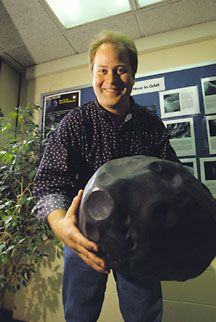

This is an exciting time to be involved in asteroid research. Not only do we have recent images of main belt asteroids Gaspra and Ida (and its moon Dactyl) (seen above) from the Galileo spacecraft, but we also have delay-Doppler radar images of near-Earth asteroids Castalia, Toutatis, and Geographos (also, see the information below). We even have a mission (called NEAR) which is is in orbit around near-Earth asteroid Eros. It has already imaged the large main-belt asteroid Mathilda.
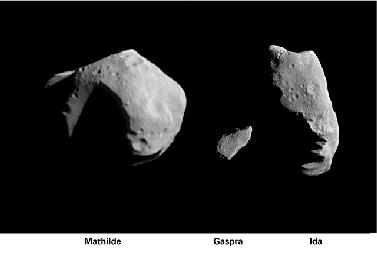
 Other
interesting asteroid links
Other
interesting asteroid links
 Links to observatories, institutions, societies, and journals
Links to observatories, institutions, societies, and journals
 FAQs: Ten Frequently Asked Questions about NEO Impacts
FAQs: Ten Frequently Asked Questions about NEO Impacts Are Asteroids Rubble Piles?
Are Asteroids Rubble Piles?
 Crater Chains on the Earth and Moon?
Crater Chains on the Earth and Moon?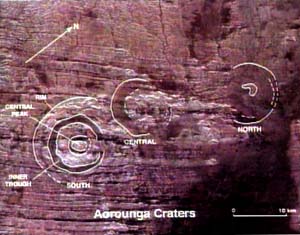
This is a SAR ("radar") image taken from the shuttle Endeavour of a known impact crater in an area called Aorounga, in northern Chad. A. Ocampo and K. Pope of JPL suggest that the two circular marks near the known crater may be additional impact craters, each about 10 miles in diameter. Could this be evidence of a crater chain on Earth similar to those formed on the Galilean satellites? How would such a chain form in the first place?

|
Can Tidal Disruption of Asteroids Make Crater Chains
on the Earth and Moon?
 Bottke, W. F., D. C. Richardson, S. G. Love (1997) Icarus 126, 470-474. |

|
Production of Tunguska-sized bodies by
Earth's tidal forces
 Bottke, W. F., D. C. Richardson, S. G. Love (1997) Planetary and Space Science, in press. |
 1620 Geographos: A Tidally Distorted Asteroid?
1620 Geographos: A Tidally Distorted Asteroid?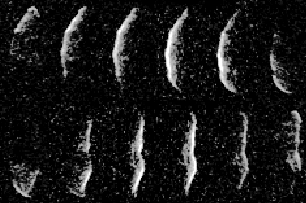
1620 Geographos is a unusually shaped asteroid whose orbit crosses the Earth's orbital path around the Sun. Delay-doppler radar images from Steve Ostro (and others) at JPL show that this asteroid is nearly 3 times as long as it is wide (5.1 x 1.8 km, or 2.8 x 1.0 normalized). In addition, these images show the Geographos has an "S" or a "pinwheel" shaped structure. We believe this shape could have been produced during a close encounter with Earth sometime in the past, where Earth's tidal forces stretched the object into a new highly-elongated and irregular configuration.
 1620 Geographos
and 433 Eros: Shaped by Planetary Tides?
1620 Geographos
and 433 Eros: Shaped by Planetary Tides?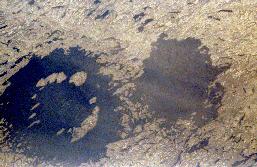
I am currently trying to understand the formation of doublet
craters on the Earth and the other terrestrial planets. Nearly 10% of
the largest craters on Earth (including East and West Clearwater Lake
in Canada, shown above) are doublets, formed by the nearly simultaneous
impact of objects of comparable size. My results suggest that these
objects can only be formed by a population of binary asteroids
(asteroids with satellites) among the near-Earth asteroid population.
Moreover, that Earth's tidal forces are the source for most of the
binaries in the near-Earth asteroid population. I suggest that
rubble-pile asteroids, after experiencing a close approach with Earth,
are frequently split into multiple fragments which can begin to orbit
one another. These objects can reencounter the Earth at a later time
and impact while separated.
 Images of Interesting Large Elliptical Craters
Images of Interesting Large Elliptical Craters
Tel: (303) 546-9670
Fax: (303) 546-9687
E-mail:bottke[at]boulder.swri.edu